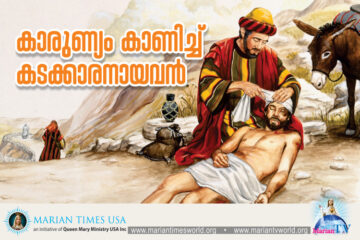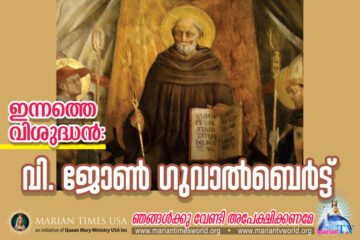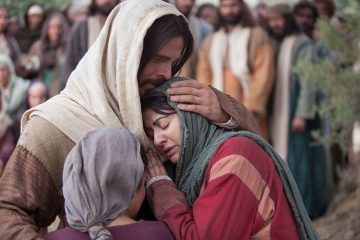THE POWERFUL TOUCH OF FAITH


Fr. Abraham Mutholath,
Chicago, USA.
HOMILY EIGHTH SUNDAY OF ELIJAH – CROSS – MOSES
INTRODUCTION
Two miracles of Jesus are interwoven in the gospel passage. On his way to help Jairus rescuing his daughter from death, Jesus had privately healed a woman who had been bleeding for 12 years and could not get any better even though she spent most of resources with earthly physicians. Because of her faith, Jesus healed her in private and asked her to acknowledge that in public so that others could also glorify God. Even though Jairus’ daughter had died by the time Jesus reached his house, he gave her life back. In contrast to the previous miracle, Jesus instructed the parents of the child not to tell others the details of the miracle. People standing around there mourning at the death of the child was already aware of what had happened.
THE BIBLE TEXT
Luke 8:41-56
Jairus’s Daughter and the Woman with a Hemorrhage.
(41) And a man named Jairus, an official of the synagogue, came forward. He fell at the feet of Jesus and begged him to come to his house, (42) because he had an only daughter, about twelve years old, and she was dying. As he went, the crowds almost crushed him. (43) And a woman afflicted with hemorrhages for twelve years, who [had spent her whole livelihood on doctors and] was unable to be cured by anyone, (44) came up behind him and touched the tassel on his cloak. Immediately her bleeding stopped. (45) Jesus then asked, “Who touched me?” While all were denying it, Peter said, “Master, the crowds are pushing and pressing in upon you.” (46) But Jesus said, “Someone has touched me; for I know that power has gone out from me.” (47) When the woman realized that she had not escaped notice, she came forward trembling. Falling down before him, she explained in the presence of all the people why she had touched him and how she had been healed immediately. (48) He said to her, “Daughter, your faith has saved you; go in peace.” (49) While he was still speaking, someone from the synagogue official’s house arrived and said, “Your daughter is dead; do not trouble the teacher any longer.” (50) On hearing this, Jesus answered him, “Do not be afraid; just have faith and she will be saved.” (51) When he arrived at the house he allowed no one to enter with him except Peter and John and James, and the child’s father and mother. (52) All were weeping and mourning for her, when he said, “Do not weep any longer, for she is not dead, but sleeping.” (53) And they ridiculed him, because they knew that she was dead. (54) But he took her by the hand and called to her, “Child, arise!” (55) Her breath returned and she immediately arose. He then directed that she should be given something to eat. (56) Her parents were astounded, and he instructed them to tell no one what had happened.
INTERPRETATION
Raising from the dead is an unusual miracle. Bible gives several instances of this. According to the Old Testament, prophets Elijah(1Kings 17:17-24) and Elisha(2nd Kings 4:32-37) performed such miracles. Another regaining of life happened when a dead man was buried in the grave of Elisha. When the body touched the bones of the prophet, he came back to life. (2Kings 13:20-21).
In the new Testament, Jesus, Peter (Acts 9:36-42) and Paul (acts 20:9-12) raised people from the dead. Jesus raised a Nain widow’s son (Luke 7:11-17), Jairus’ daughter (Luke 8:41-56), and Lazarus after three days of his death (John 11:1-14). At the death of Jesus, “The earth quaked, rocks were split, tombs were opened, and the bodies of many saints who had fallen asleep were raised. And coming forth from their tombs after his resurrection, they entered the holy city and appeared to many.” (Matthew 27:51-53). Jesus himself rose from the dead (Matthew 28:6, Acts 2:24) was the greatest of these miracles.
On Jesus’s way to heal Jairus’ daughter, Jesus healed another woman. St. Luke interweaved both miracles presenting Jesus as the master of sickness and death. The faith of Jairus in Jesus and the faith of the sick woman led to the miracles through divine mercy.
(41) And a man named Jairus, an official of the synagogue, came forward. He fell at the feet of Jesus and begged him to come to his house,
Though the names of many beneficiaries are not mentioned in the gospels, the evangelist gave the name of the synagogue official considering his popularity and prominence in the community. The early gospel readers also might know him and the mention of his name would add to the credibility of the report. Jesus used to go to the synagogues on the Sabbath to pray and preach. So, he might know Jairus in person.
Though a prominent Jew and official of the synagogue, he “fell at the feet of Jesus and begged him” in public as an expression of his humility and faith in Jesus. He knew that only Jesus could heal his child because he had seen Jesus healing many sick even in the synagogue.
(42) because he had an only daughter, about twelve years old, and she was dying. As he went, the crowds almost crushed him.
Though each child is precious for the parents, losing the only child will add to the grief of the parents. In Jairus’ case, the dying child was his only daughter. The son of the widow of Nain whom Jesus raised during the funeral procession was the only son of the mother (Luke 7:12). Lazarus whom Jesus raised on the fourth day after his death was the only brother of Martha and Mary (John 11:1-44). Luke as a physician and precise writer gives the age of the child as twelve. Luke also gives the medical condition stating that the child was dying. So, the readers get a clear picture of how dear the child would be to her father and how dire was his need.
The crushing of the crowd around Jesus was because of the narrow road and the presence of numerous people who came to see and hear Jesus. They were all walking with him on his way to Jairus’ house. They also might be curious to witness the healing of the dying child. This sets the background for the what follows in the narration.
(43) And a woman afflicted with hemorrhages for twelve years, who [had spent her whole livelihood on doctors and] was unable to be cured by anyone,
Another miracle happened on the way to Jairus’ house. Number 12, that has much significance in the Bible, appears here also. The daughter of Jairus was 12 years old and the woman was afflicted with hemorrhages for 12 years. Besides her physical suffering, this woman was considered unclean and practically outcast for such a long time. According to the law of Moses, “Any bed on which she lies during such a flow becomes unclean, as it would during her menstrual period, and any article on which she sits becomes unclean just as during her menstrual period. Anyone who touches them becomes unclean; that person shall wash his garments, bathe in water, and be unclean until evening.” (Lev. 15:26-27). So, she could not be living with any people or could have any social contact. Luke the physician records that no doctor was able to cure her. She had spent all her livelihood for medical treatment and all such efforts were in vain. Mark records that the medical treatments did not help but only made the sickness worse (Mark 5:26). All these add to the gravity of her suffering and the magnitude of her healing by Jesus.
(44) came up behind him and touched the tassel on his cloak. Immediately her bleeding stopped.
There was a specific reason for the woman to come in secret behind Jesus and to avoid asking for help. When the crowd was crushing on Jesus, she could not reach him and if people had recognized her uncleanliness, they would not allow her to reach them or Jesus. She was also afraid to come in front of Jesus and present her case in public because of her detested sickness. Since she was away from public for 12 years, no one recognized her uncleanliness. So, she could reach Jesus squeezing through the moving crowd. Her only hope was in Jesus and that gave her the courage to take risk to approach Jesus in disguise. Her faith made her touch the tassel on the cloak of Jesus as a meaningful gesture of her faith in the healing of Jesus.
God had instructed through Moses that the Israelites had “to make tassels for the corners of their garments, fastening a violet cord to each corner.” (Numbers 15:38). The purpose of the tassels was that “the sight of the cord will remind you of all the commandments of the LORD.” (Numbers 15:39). Jesus also wore such outer garment with four tassels prescribed by law.
According to Malachi 3:20 (4:2), “for you who fear my name, the sun of justicewill arise with healing in its wings.” When Jesus came as this sun of justice or Messiah, people touched his outer garment considering it as his wings for the prophesied healing. That was what this woman also did with her faith in the Messiah. According to Mark 5:28, “She said, ‘If I but touch his clothes, I shall be cured.’”
There were other instances where the sick people touched the tassel of Jesus’ garment and got healed. Matthew records that when Jesus and his disciples reached Gennesaret, people brought the sick to him and “begged him that they might touch only the tassel on his cloak, and as many as touched it were healed.” (Matthew 14:36). Mark also reports the same (Mark 6: 53-56).
There were similar instances of healing power flowing from the clothes or even shadow of the apostles and other saints. St. Luke records in the Acts of the Apostles about St. Paul that “when face cloths or aprons that touched his skin were applied to the sick, their diseases left them and the evil spirits came out of them.” (Acts 19:12). Even grater and strange way of healing happened in the case of St. Peter. “Thus they even carried the sick out into the streets and laid them on cots and mats so that when Peter came by, at least his shadow might fall on one or another of them.A large number of people from the towns in the vicinity of Jerusalem also gathered, bringing the sick and those disturbed by unclean spirits, and they were all cured.” (Acts 5:15-16). Relics of saints have been used by the faithful as instruments of God’s miracles and healing on people.
The bleeding of the woman stopped because of the intentional healing that Jesus gave her considering her good faith and intention. Touching the tassel of Jesus’ garment was her expression of faith.
(45) Jesus then asked, “Who touched me?” While all were denying it, Peter said, “Master, the crowds are pushing and pressing in upon you.”
No one other than Jesus and the woman knew the meaning of Jesus’ question, “Who touched me?” Others were touching or pressing on Jesus, to get his attention, to hear him speak, or the crowd was pushing on those standing close to Jesus so they could not avoid pressing on him. Jesus’ implied meaning of the question was who touched him with faith for healing. That was not clear for the disciples and the crowd around them. Those who pressed on Jesus did not and could not acknowledge that they touched him intentionally. As usual, Peter was bold and open minded in reminding Jesus that it is natural that the crowd would press on him in that situation.
(46) But Jesus said, “Someone has touched me; for I know that power has gone out from me.”
Jesus specified that a person had touched him purposefully to receive power from him. He knew who touched him because he had healed her. Since she came from the back, he could not physically see her. Jesus might have noticed her moving away from him through the crowd after she got cured. He wanted the disciples and public know that they should approach him with such deep faith to receive power of healing and salvation from him.
We must approach Jesus with the faith of the humble woman who received healing power from Jesus. Most often we go to church or approach Jesus like all the others who come near Jesus as observers.
(47) When the woman realized that she had not escaped notice, she came forward trembling. Falling down before him, she explained in the presence of all the people why she had touched him and how she had been healed immediately.
For the past 12 years the woman was living in seclusion. She had heard about the healing Jesus used to provide and sending no one without providing help. But she did not expect such a questioning from the part of Jesus. She felt fear and began to tremble. She, who had moved away, came forward once more through the crowd to give testimony of what had happened. She did this “falling down before him” to express her humility and gratitude. She publicly acknowledged that she received an instant healing from Jesus.
(48) He said to her, “Daughter, your faith has saved you; go in peace.”
Jesus had noticed the fear and trembling of the woman. He comforted her by calling her daughter. This is the only time when Jesus is reported to call a woman “daughter.” His fatherly affection in fact might have made her emotional comfort and spiritual healing making her a great disciple of Jesus. According to the apocryphal writing the “Gospel of Nicodemus,” which is not an approved as a Canonical book, this woman is presented as Veronica who wiped the face of Jesus on his way to Calvary for crucifixion. There also she had received another miracle of mercy by imprinting the image of Jesus on her handkerchief.
While addressing the woman stating that her faith had save her, Jesus was acknowledging her persistence of faith during her long term physical, mental, and spiritual struggle. Her prolonged misery led her to great reward from the Lord. Jesus also wished her peace in her life journey.
(49) While he was still speaking, someone from the synagogue official’s house arrived and said, “Your daughter is dead; do not trouble the teacher any longer.”
While the drama of the woman’s healing and questioning was going on, Jairus might have been getting nervous that Jesus was delaying his journey on his way to heal his dying daughter. He might have felt bad about the intervention of the woman at the critical moment. What Jairus feared had happened. He got news from his house that his daughter had died. No one was aware that Jesus would raise his daughter in case she would die. That was the reason why they did not want to bother Jesus, the busy teacher, to continue journeying to the house of Jairus. They were busy with funeral rituals.
(50) On hearing this, Jesus answered him, “Do not be afraid; just have faith and she will be saved.”
Jesus dealt with faith and fear in both the miracles. Both the woman and Jairus approached Jesus with faith. Both got afraid in the middle of their contact and Jesus comforted both. Jesus appreciated the faith of the woman and Jairus. Both got peace and remedy from Jesus. Jairus did not make any complaint to Jesus for the delay he made. Instead, he believed in the words of Jesus that his daughter would be saved.
Same kind of delay and even more happened in the case of Lazarus when the news came to Jesus that he was sick. Jesus took four days to reach the house of Lazarus. The delay from Jesus’s part was for expressing the greater glory of God. In both cases, Jesus comforted the family and did the great miracle of rising the dead back to life.
(51) When he arrived at the house he allowed no one to enter with him except Peter and John and James, and the child’s father and mother.
Though all the disciples and the crowd accompanied Jesus to the house of Jairus, he limited the number of people who would enter the house. However, he assured that there were enough people to witness the event. Those were his three favorite apostles and the parents of the deceased child. The other instances when Jesus allowed his inner circle of Peter, James and John to accompany him were at the time of transfiguration of Jesus on a mountain (Matthew 17:1-2) and when he went to the Garden of Gethsemane to pray before his arrest (Matthew 26:37, Mark 14:33).
(52) All were weeping and mourning for her, when he said, “Do not weep any longer, for she is not dead, but sleeping.”
By the time Jesus had arrived, many of the neighbors, friends and relatives of Jairus might have reached there. They would normally express their grief at the death of the only daughter of their dear synagogue official. According to the Jewish custom, women mourners and hired flute players were employed to perform public lamentations to create an atmosphere of grief. According to Mark, when Jesus and others reached the house, “he caught sight of a commotion, people weeping and wailing loudly.” (Mark 5:38).Jesus had asked them to discontinue their weeping because the author of life was there to resolve the issue. He presented the death of the girl equivalent to a sleep from which he was going to wake her up.
(53) And they ridiculed him, because they knew that she was dead.
In the human sense, the girl was pronounced dead and there was no hope of bringing back her life. So, when Jesus said she was sleeping, the mourners who were professionals to confirm the death felt that they were degraded. So, they were bold enough to ridicule the prominent Lord Jesus in public. The evangelist presented this mean act of the mourners, who were assured of the death of the child, to confirm that the miracle was not a healing but a resurrection of the dead child.
(54) But he took her by the hand and called to her, “Child, arise!”
God who created the universe and the humanity need only two words to give back the life. The Aramaic words, “Talitha, kumi!” meaning “Maid, arise!” were loving words of parents waking up their children.
(55) Her breath returned and she immediately arose. He then directed that she should be given something to eat.
When God created Adam, God “blew into his nostrils the breath of life, and the man became a living being (Genesis 2:7). That breath of life of the child was lost before Jesus had arrived at the house of Jairus. This breath was returned to her with the tender touch of Jesus asking her to arise. This shows that the immortal soul that separates from the body does not die with the body. It can exist by itself and reunite with the body when God wants. We believe that we all will rise from the dead at the second coming of Christ when our departed souls will be reunited with our supernatural resurrected body.
When she rose up, Jesus might have noticed her physical weakness because of the lack of enough nutrition. Because of her severe sickness, she was not eating for days. With a paternal love, Jesus instructed her parents to give her food. This shows how Jesus wants us to meet the physical needs of others who need our care. It was also a proof that she rose from the dead in good health and that she was capable of eating that she could not do for days before her death.
(56) Her parents were astounded, and he instructed them to tell no one what had happened.
The parents were amazed because Jairus was asking for healing of the daughter before her death. However, Jesus did even a greater miracle for him. All people who confirmed her death and had been lamenting were also excited to notice the great miracle. It was natural that the news could spread like a wildfire. He did not want the parents to tell the details of what happened for over publicity. Besides facilitating the popularity of Jesus, that would also speed up the passion of Jesus from his enemies who were envious of his popularity. He had more work to complete before the end of his earthly life.
MESSAGE
- Though Jairus was a prominent person in the society, he humbled himself in front of Jesus in public because he knew that only Jesus could help him in such a situation. Many forces of this world are not in our control. We will have to humble and submit ourselves in front of God regardless of whether we are in good health and ill health.
- The people who traveled with Jesus to the house of Jairus were mere observers of Jesus and listeners of his action. We often approach Jesus or go to church for worship in a like manner. If we approach him with the faith and humility of the woman who touched the tassel of Jesus’ garment, the power of Jesus will flow to us also.
- Those who receive the grace of Jesus should acknowledge it before others so that they can also learn from those who received the blessing. In the gospels we see that many who received healing from Jesus publicized it even when Jesus had asked them not to do so.
- Persistence of continued faith amid severe suffering is a lesson we could learn from this woman. She did not give up her faith in the Lord though she was not seeing any light in the dark tunnel of her life.
- Instead of blaming God for her suffering, the woman might have been waiting for the intervention of God as per God’s design. She took appropriate action of faith when the opportunity arrived. We must approach Jesus without losing hope and do our part for Jesus to share his power on us.
- After regaining the life of Jairus’ daughter, Jesus instructed her parents to give food to the child. Jesus knows our physical needs. He wants us to take care of the physical needs of others as he did instruct his disciples before he fed the 5,000 (Matthew 14:16).
മരിയന് ടൈംസിലെ ഇന്നത്തെ പ്രധാനപ്പെട്ട അപ്ഡേറ്റുകള് താഴെ ലഭിക്കുന്നതാണ്.









